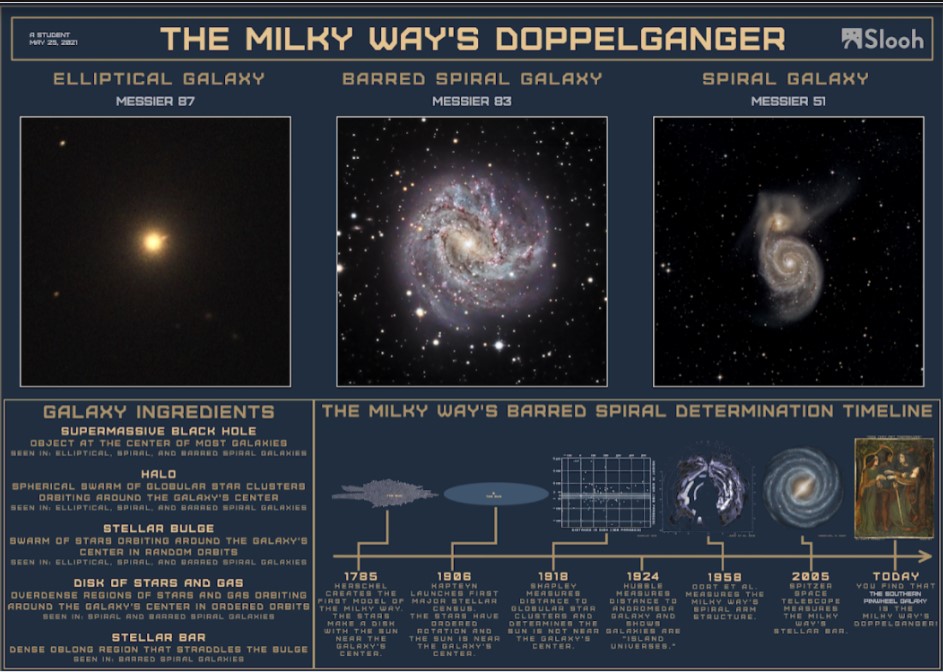Educator Edtech Review: Slooh
Slooh offers Next Generation Science Standards-aligned content and access to control telescopes at some of the best locations on the planet.

Slooh provides students and teachers access to live feeds from real telescopes at some of the top viewing locations in the world. This includes locations in the Canary Islands and Chile as well as a new telescope in Australia slated to come online in early 2024.
I found real value in Slooh's educational resources, which are aligned with Next Generation Science Standards (NGSS). I also liked the active community of experts and citizen science astronomers who helped me understand and do real astronomy as well as participate in live events. While doing my review I participated in “Quests” and “Star Parties.”
With the total solar eclipse coming in April, having a tool such as Slooh can help support student interest in astronomy and STEM topics.
Slooh: Getting Started
I found getting started with Slooh easy. Once logged in to my account, I was brought to my dashboard. The dashboard is the hub from which I can contribute to the community, share and view observations, schedule new or view past Missions, as well as join Quests and Slooh special events. A place to view my saved photos and those shared by the community is also available.
Slooh has a large amount of astronomy content and I was a little overwhelmed at first, but the introductory video as well as their quality resources and support flattened the learning curve rather quickly. As an educator, I appreciated that Slooh is not about simulations, but allows students hands-on control of real telescopes. Also, the gamified learning features will further motivate students to continue their knowledge.
I can assign students Quests to teach about space and the universe in a real tangible way that goes beyond simulations and textbooks. Quests are NGSS-aligned guided activities designed to help students use their telescopes to explore space. The gamification of Quests allows students to earn Gravity Points and Badges for motivation and engagement.
Missions are 5- or 10-minute sessions on a telescope scheduled for a particular date and time when students or teachers can control one of their telescopes to explore and capture images of a particular object in the universe. Pre-set missions are also available that I could join as part of the community. All the images taken are saved in your account.
Tools and ideas to transform education. Sign up below.

Slooh: Best Features
- Slooh "Missions" that give live control of real telescopes in world-class locations to observe the universe in real-time.
- The “Workspaces” feature integrates with Google Classroom and provides me with access and control of NGSS-aligned “Quests” that I can assign to students. As well as giving students the tools to create posters and animations to show understanding and share knowledge.
- Gamification of learning to engage and motivate students to continue their learning independently.
- The online community is a vibrant group of experts and passionate astronomy amateurs who share their expertise and answer questions.
Slooh: Pricing
Pricing varies depending on the plan selected and if you want a single, multiple-classroom license or one for your building or district. An advanced telescope control license for high school astronomy courses is also available.
To see more info or request a quote you can visit Slooh’s pricing page.
Slooh: Key Takeaways
Slooh provides students and teachers access to high-quality live telescopes and up-to-date data and imaging to bring the science of astronomy to life. I found it refreshing that I wasn’t just learning on my own, or with classmates if I was a student, but with a community that supports one another and shares resources.
Ultimately, Slooh gives teachers and students studying space STEM fun and real-life science experiences that will motivate them to explore the universe even more.
Frank Pileiro is the former Supervisor of Technology & Data for the Linwood Public Schools in Linwood, NJ. He speaks at the local, state, and national levels about empathy, educational innovation, and instructional technology.
